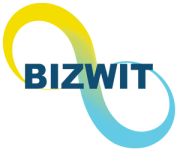Global Liver Disease Treatment Market is valued at approximately USD XXX billion in 2021 and is anticipated to grow with a healthy growth rate of more than XX% over the forecast period 2022-2029. The liver is a crucial organ whose sole function is to process and eliminate potentially harmful body toxins. Any disease condition that causes liver inflammation and may impede the liver’s normal function is referred to as liver disease. Liver problems can be caused by infections, autoimmune disorders, using over-the-counter medications excessively, getting injured, drinking alcohol, and other factors. Immunoglobulin is also used to treat certain types of hepatitis. Alcohol consumption and an unhealthy lifestyle are the main causes of the rising prevalence of liver disorders such as non-alcoholic fatty liver disease (NAFLD), liver cirrhosis, hepatitis, and liver cancer worldwide. Additionally, an increase in elderly population around the world contributes to disease dysfunction. As a result, there has been an upsurge in hospital admissions for both hereditary genetic disorders and the different liver diseases indicated above. In addition, poor eating habits and unhealthy diet causes excess weight further leading to obesity. The two main factors contributing to fatty liver disease in adults are obesity and alcoholism. As a result of being overweight or obese, fat develops in the liver. This results in persistent inflammation and liver scarring (also known as cirrhosis). Obesity and non-alcoholic fatty liver disease are closely related. Excess fat leads to insulin resistance and inflammatory signals. Patients with high blood pressure, high cholesterol, excess body weight, diabetes, or insulin resistance are more susceptible to developing fatty liver disease.
Furthermore, owing to low immunity levels than adults, the geriatric population is more prone to liver illnesses. In addition, ageing has been shown to increase vulnerability to acute liver injury. Thus, the rising aging population is anticipated to support market growth during the forecast period. According to the World Bank, 8% of the total population aged 65 and older lived in the world in 2015, and in 2021 the rate reached 10 %. Additionally, the rising investments in R&D activities for the development of better liver disease treatment are anticipated to create a lucrative opportunity for the market during forecast period. However, the stringent regulatory approvals related to liver disease treatment drugs and vaccines stifle market growth throughout the forecast period of 2022-2029.
The key regions considered for the Global Liver Disease Treatment Market study include Asia Pacific, North America, Europe, Latin America, and Rest of the World. North America is the dominating region across the world in terms of market share, owing to the presence of key players, rise in consumption of alcohol, unhealthy lifestyle leading to obesity & weight gain, and rise in healthcare expenditure in the region. Whereas, Asia Pacific is also anticipated to exhibit the highest growth rate over the forecast period, owing to factors such as increase in R&D activities, surge in liver diseases, unmet medical demands, and growing investments in the healthcare sector which would create lucrative growth prospects for the Liver Disease Treatment market across Asia Pacific region.
Major market players included in this report are:
Abbvie Inc.
Abbott Laboratories
Astellas Pharma Inc.
Bristol-Myers Squibb
Eli Lilly And Company
Emergent Biosolutions Inc. (Cangene Biopharma)
F. Hoffmann-La Roche Ag
Gilead Sciences, Inc.
Merck & Co. Inc.
Viatris Inc.
Recent Developments in the Market:
Ø April 2020, Alnylam Pharmaceuticals Inc. and Dicerna Pharmaceuticals Inc. collaborated to create and market investigational RNAi therapies for the treatment of liver disease caused by alpha-1 antitrypsin deficiency.
Global Liver Disease Treatment Market Report Scope:
Historical Data 2019-2020-2021
Base Year for Estimation 2021
Forecast period 2022-2029
Report Coverage Revenue forecast, Company Ranking, Competitive Landscape, Growth factors, and Trends
Segments Covered Treatment Type, Disease Type, Region
Regional Scope North America; Europe; Asia Pacific; Latin America; Rest of the World
Customization Scope Free report customization (equivalent up to 8 analyst’s working hours) with purchase. Addition or alteration to country, regional & segment scope*
The objective of the study is to define market sizes of different segments & countries in recent years and to forecast the values to the coming years. The report is designed to incorporate both qualitative and quantitative aspects of the industry within countries involved in the study.
The report also caters detailed information about the crucial aspects such as driving factors & challenges which will define the future growth of the market. Additionally, it also incorporates potential opportunities in micro markets for stakeholders to invest along with the detailed analysis of competitive landscape and product offerings of key players. The detailed segments and sub-segment of the market are explained below:
By Treatment Type:
Antiviral Drugs
Immunosuppressants
Vaccines
Immunoglobulins
Corticosteroids
Targeted Therapy
Chemotherapy
By Disease Type:
Hepatitis
Autoimmune Diseases
Non-alcoholic Fatty Liver Disease (NAFLD)
Cancer
Genetic Disorders
Others
By Region:
North America
U.S.
Canada
Europe
UK
Germany
France
Spain
Italy
ROE
Asia Pacific
China
India
Japan
Australia
South Korea
RoAPAC
Latin America
Brazil
Mexico
RoLA
Rest of the World



